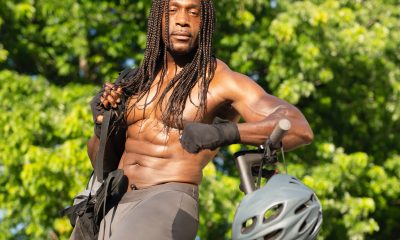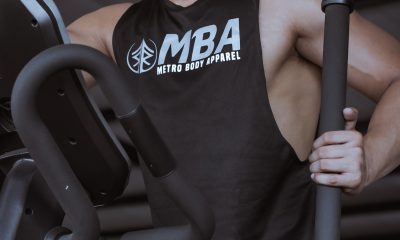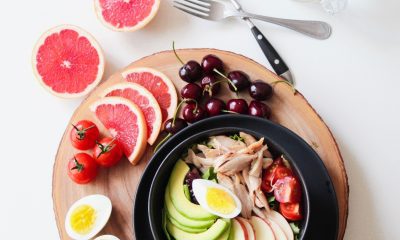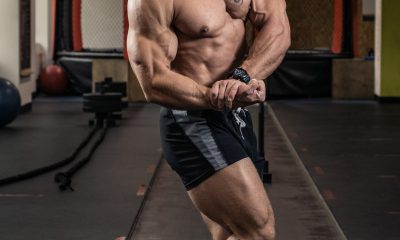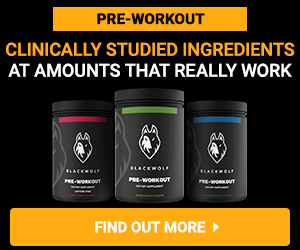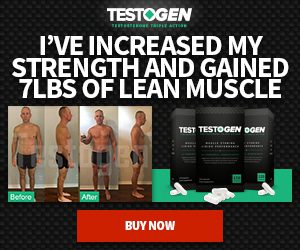Nutrition
Should A Growing Teen Pay Attention To Nutrient Timing Or Just Eat?

When it comes to teens, nutrition becomes a very essential thing of their life. This is because it is during these times that they are experiencing a lot of changes especially physically but also mentally and functionally. During Nutrient Timing that most people engage in sporting activities. Therefore, when looking into the aspect of nutrition for the teens, it is also important to consider whether such a teen actively involves in sporting or may working activities or not.
What is nutrient timing?
What now is nutrient timing? Nutrient timing involves having specified times of taking foods so that you end up with certain body properties that you need. Nutrient timing therefore seems a strategic way of getting certain outcomes for the teens. The question therefore remains, is it necessary? Considering teens in sporting activities as well as bodybuilding, nutrient timing seems to be a great idea since its sole purpose includes:
- Aiding in muscles growth.
- Improving sports performance.
- Accelerating fat loss.
Evolution of Nutrient Timing
Nutrient timing has been around for a while. For almost 50 years, Nutrient timing has formed a very crucial part of bodybuilders and several researchers have done serious work to find its many benefits. The benefits are not well brought out mainly of some few limitations. These include:
- The use of short-term blood makers meaning that the long time benefits are left out.
- The use of ultra-endurance athletes during the study.
Related Article:: How to Do Bodybuilding Above 50 years Age
The Concept of Anabolic Window
Something very controversial about nutrient timing is the anabolic window. It is sometimes referred to as the window of opportunity and is a period of about 30 minutes after workouts during which it is assumed that the body can absorb nutrients perfectly. This is a concept that is still debatable, with some people arguing that it a fact while still others believe that it is a myth.
How Does the Concept Seem To Work?
The theory of anabolic window assumes to work based on two important aspects.
1. Carb Replenishment Principle
This aspect is supported by abundant research, with carbs especially glycogen being replenished within about 30 minutes to an hour. This is usually after workouts and hence the need for immediate replenishment. This of course serves to increase performance and recovery.
However, there seems to be a problem. Despite the fact that the concept is well in line with the theory, this will only imply that timing is only going to be of essence if you have a teen who is dedicated to training several times a day. It therefore becomes irrelevant to people who train once are not into training at all.
Another thing that seems not in line is the finding that training will be even better with lower amounts of glycogen in the muscles. This largely applies to teens who are actively involved in fat burning and fitness programs. Immediate replenishment has in fact been shown to reduce the benefits that should be coming out of the respective programs. It is therefore important to note that this aspect does not necessarily apply to most people making the theory of anabolic window almost a myth.
Must Read:: 8 Bodybuilding Myths Those Are Total Bullshit
2. Protein Intake Principle
The protein intake principle works on the basis of using proteins to stimulate the synthesis of proteins in the muscles. Protein synthesis in the muscles is very crucial because it facilitates their growth and also aids in recovery. However, is it necessary that one replenish the proteins right after working out? Well, research has spelt out clearly that it is not necessary and that what is important is actually the total daily protein intake. By taking high quality proteins during each meal, the concept of anabolic window becomes useless and more or less a waste of time and energy.
Buy it >> HERE
The Concept of Pre-Workout Window
Another very important concept that is important in nutrition timing and which therefore also determines whether teens should pay attention to nutrition timing or not is the concept of the pre-workout window. Unlike the anabolic window, this concept to some extend tends to agree more with researchers and experts in the field. This is because keeping the correct time for the pre-workout has been shown to greatly aid performance. This is to mean that there is a timing for teens who wish to burn the fat in their body and there is timing for the teens who wish to enhance their performance in such things as sports.
Carbs are very essential in this window. They provide the energy you need and therefore should never be skipped. A common mistake that people make is eating immediately before the actual workout. This ensures that there is minimal competition between the stomach and the muscles and therefore lets the muscles concentrate on the performance. An allowance of 1 to about 4 hours will generally be perfect.
Another thing to include to your pre-workout nutrition will be sufficient water. This is very essential and drinking about 430 ml of water before a workout will most likely boost the performance.
Must Read:: Bodybuilding Diet Myths for Beginners
It is advised that vitamins should not be taken during this phase. This is because of their negative influence on performance and serving to minimize the benefits of the workout. Thus, in as much nutrition timing as a whole is more of a false myth, some concepts like this pre-workout window is important. The main benefits of adhering to this include:
- Help maximize the performance of the teen.
- Improve the body structure and composition.
- Fat loss acceleration.
Relationship between Nutrient Timing and Breakfast
So what should your teen eat for breakfast or should he or she even it at all? It is a very debatable concept with some expert advising that it may not be necessary to even eat breakfast while others advising certain types of meals with specific nutrients. For those who recommend breakfast, they argue that it should contain very low amounts of carb and high amounts of fat. Such a breakfast will of course help raise the energy levels, maintain higher mental function and accelerate fat burning from the body.
There is no enough evidence to support this though and everything is currently in grey areas. Anything is possible and some even propose that proteins during this time will be great. Therefore, for teens as well as any other person who is looking into the issue of nutrition timing, breakfast timings are not well researched. Ones preferences and also what one wants to achieve should be the driver.
Related Article:: Muscle Building Breakfast Ideas: Start Your Day Right
Relationship between Nutrient Timing and Night
Almost every concept for nutrient timing seems to be a false myth and this one seems to be yet another one. It is generally believed that reducing carbohydrates at night will definitely lead to weight loss. It is a false myth that has been spread across the globe to the extent that people are actually into it. In truth however, when you reduce the carbs, the calories are also going to be reduced. The calorie-deficit that is the result of this will ensure that there is weight loss. It is therefore not a matter of timing but a matter of reduction of one thing, which then affects another.
Reducing carbs at night might in fact be the opposite of what is expected. This is because some experts have proved that carbs at night might help improve sleep quality. For teens therefore, nutrient timing at nigh seems to be out of question and not a suggestion at all.
Nutrient Timing Vs. Just Eating
Despite the fact that nutrient timing has been around for several decades now, more and more research is slowly disapproving it and making it obsolete. What remains is for the teens therefore is simply eating without the stress that comes along with nutrient timing. However, there must be order behind just eating as we are going to see next.
Teen athletes
When talking about nutrition and teens, it is important to consider this concept of physical activity. This is because teens who are physically active have unique nutrient requirements, which we will consider here.
Teen Nutrition Composition
For teenagers, their food should contain certain components that help sustain them through this period. They should be able to get the right balanced nutrients with more calories and most basic nutrients such as proteins.
A teen’s diet should comprise more or less of the following:
- Fruits and vegetables that contributes to about 2000 calories every day.
- Calcium about 1300 mg per day. The calcium should be fat-free or with less fat. The common sources milk and yogurt.
- Proteins which are much needed to help build muscles and as well as other rapidly growing muscles. Popular sources of proteins include lean meat and poultry.
- Foods, which are rich in iron. Iron is essential in both girls and boys but will be particularly useful in girls who lose a lot of blood through menstruation.
- Whole grains. Whole grains are very good sources of the much needed energy during the teen phase of life among other important roles.
- For teenagers, fat should be limited as much as possible. Fat of about 2 to about 30 percent of the total calories will be a good amount for the teens.
Vitamins and Minerals
Vitamins and minerals should be part and parcel for teen nutritional diet. There are several vitamins and minerals all of which serve different functions in the body. Calcium and iron are particularly important for those teens who are physically active because they bring about strong bones as well as sufficient supply of blood to the muscles respectively. Iron is abundant in many types of foods such as the fish and most green leafy vegetables and many more others. Calcium on the other hand is rich in such foods as milk and milk products.
Buy it >> HERE
Must Read:: Best Diet Plan for Bodybuilders 2019
Many vitamins are also very important and can easily be acquired from different types of foods especially fruits and vegetables. Having a balanced diet is sure to give the best result in terms of getting the required vitamins as well as mineral salts.
Carbs
Of course, when one thinks about energy sources, the first thing that comes to mind is carbohydrates. This have been proved beyond doubt to be a very nice source of energy and are therefore a very crucial part of teen nutrition. Teens should never think of cutting back on carbs and especially when they are active in sports, it may cost them a lot in terms of performance.
A good thing about this carbs is that they are readily available in most foods and hence there deficiency is rare. Sources include fruits, vegetables and whole grains. However, there is some selectivity when it comes to eating the carbohydrates. For instance, processed grains are not generally recommended while whole grains such as brown rice are more appropriate in the sense that they provide extra nutrients that may not be in processed grains. Also, carbohydrates that have a lot of sugar should be avoided as much as possible. Such carbs when taken especially before the game tend to gives people a quick burst of energy within a short time and then leave them without anything shortly afterwards.
Proteins
For proteins, it will depend on whether the teen is physically active or not. Physically active teens will definitely need more proteins as compared to their less active peers. Proteins are easily acquired from the common foods that teens eat now and then every day. While it is generally assumed that eating lots of proteins leads to gain of large quantities of muscles, it is not very true and such muscles can only be acquired from training and abundant working out. In fact, those teens who take large quantities of proteins in the name of gaining large and strong muscles end up with some side effects that include
- Occurrence of dehydration.
- Loss of considerable amounts of calcium from the body.
- Occurrence of kidney abnormalities.
Protein sources include fish, lean meat and peanut butter.
Fats
Should teens take fats or burn them? Well, technically speaking, excess fats are not recommended. However, a little fat is very necessary and teens should purpose on having them in their diet. Fats are important for long lasting energy. Carbs get used up fast and therefore fats come in a little while later after the carbs are done.
Fats also differ in types and teens are advised to take certain types and avoid other types. The main types are unsaturated and saturated fats. Unsaturated fats are considered healthier for teens and can be found in such foods like vegetable oils and some types of fish. The unsaturated fats can further be grouped into trans and cis fats. Again, cis fats are the best for teens as well as any other person. Some of these fats are particularly abundant in meat and other high fat dairy products.
For fats, timing can be of essence. It is not good for example to consume fats a short time before and after exercise for physically active teens. This is based on the fact that fats tend to make digestion slow.
Are supplements essential for teens?
For supplements, it is really good if teens know the consequences that using certain supplements will bring. There are certain supplements that can be used without actually doing any harm while there are others that come with extreme negative effects.
- Anabolic steroids
Anabolic steroids are among the most commonly abused supplements nowadays especially for teens in sports as well as bodybuilders. For teens, these should be supplements that they should try as much as possible shun. This is because most anabolic steroids are derivatives of hormones or hormones and will definitely have adverse side effects.
Anything that interrupts with the normal hormonal composition will also interfere with the normal functioning of the body. Common side effects of using anabolic steroids include:
- Male pattern of hair loss on the forehead.
- Shrinkage of the testicles.
- Growth of facial hair in girls.
- Depression and mood swings.
Salt tablets
Salt tablets are common supplements to reduce dehydration. However, the belief seems to be a false one since salt tablets demonstrate to actually be the reason behind dehydration in teens and people who use them. The salts also, especially when taken in large quantities tend to have side effects such as:
- Causing nausea and vomiting.
- Brings about painful cramps.
- Causes diarrhea.
- Damage to the stomach mucosa.
Proteins and energy bars
There are some supplements in form of proteins and energy bars. These are some of the supplements which are not 100% important and at the same time not 100% useless. They have not been implicated in doing lots of harm to the body and therefore can safely be used occasionally.
Buy it >> HERE
Dehydration and teen Nutrient Timing
Water is also another very important composition of teen nutrition that is very essential. Teens should always ensure that they avoid dehydration as much as possible. This is especially when it comes to teens involved in sporting activities. A lot of water is lost during exercises and this might be a great contributor to dehydration. Dehydration is related to such conditions as the feeling of overheated and some form of headaches. Teens in hot and humid conditions are likely to get dehydrated.
Dehydration will definitely lead to reduced performance and that is why people not only teens should strive to remain as dehydrated as much as possible. Different people require different amounts of water daily. This will depend largely on the size of the person, their age, how much they are involved in physical activities as well as the surrounding environmental conditions.
Highly physically active teems should at least drink water just before and after exercise as well as during the exercise every about 15 minutes. It is not necessary that one feel thirst before drinking water. Thirst in fact simply implies that you begin dehydrate a long time ago. At the same time, it is not necessary that you force yourself to drink water.
Some sports provide specific nutrient added water. The water is usually important in case of long periods of training but water is no different either. Carbonated water and drinks are not preferred during the exercises due to their probability to cause stomachache. Also don't drink energy drinks. In fact, avoid the energy drinks at all costs because they have caffeine as well as other components, which have the stimulant effect of caffeine.
Caffeine and Physically Active Teens
Teens who are in sports sometimes are tempted to use supplements with caffeine such as the energy drinks that we have talked about above. Caffeine has many effects in the body but importantly here is that it is a diuretic. Diuretics are substances that basically cause formation of more urine by the kidneys. It might be one of the causes of dehydration but the concept needs more research. Due to its diuretic effects, it cause an increase in the heart rate as well as leading to hypertension. It also leads to reduced quality of sleep and also having an effect of making someone abnormally anxious. The effects when combined will lead to a reduction in performance.
Buy it >> HERE
Despite the fact that some experts have found small benefits of caffeine especially in those endurance sports, it is best to keep away from it. Its benefits seem to be way below the side effects.
Conclusion
Teen nutrition can be very confusing. While there are times when nutrient timing is good, sometimes just eating will be a really good option. Nutrient timing has come a long way and while it is being seen as a false myth, there are some concepts that actually hold true and should be good for teenagers and there complicated nutritional needs. During teenage time is also a time when most people involves in sporting activity. They need to eat certain foods and avoid certain supplements. Weighing the two concepts, it is just good that teens just eat instead of chaining themselves with a theory that lacks full scientific evidence.
Bodybuilding
Are Nootropics a Better Option to AAS?
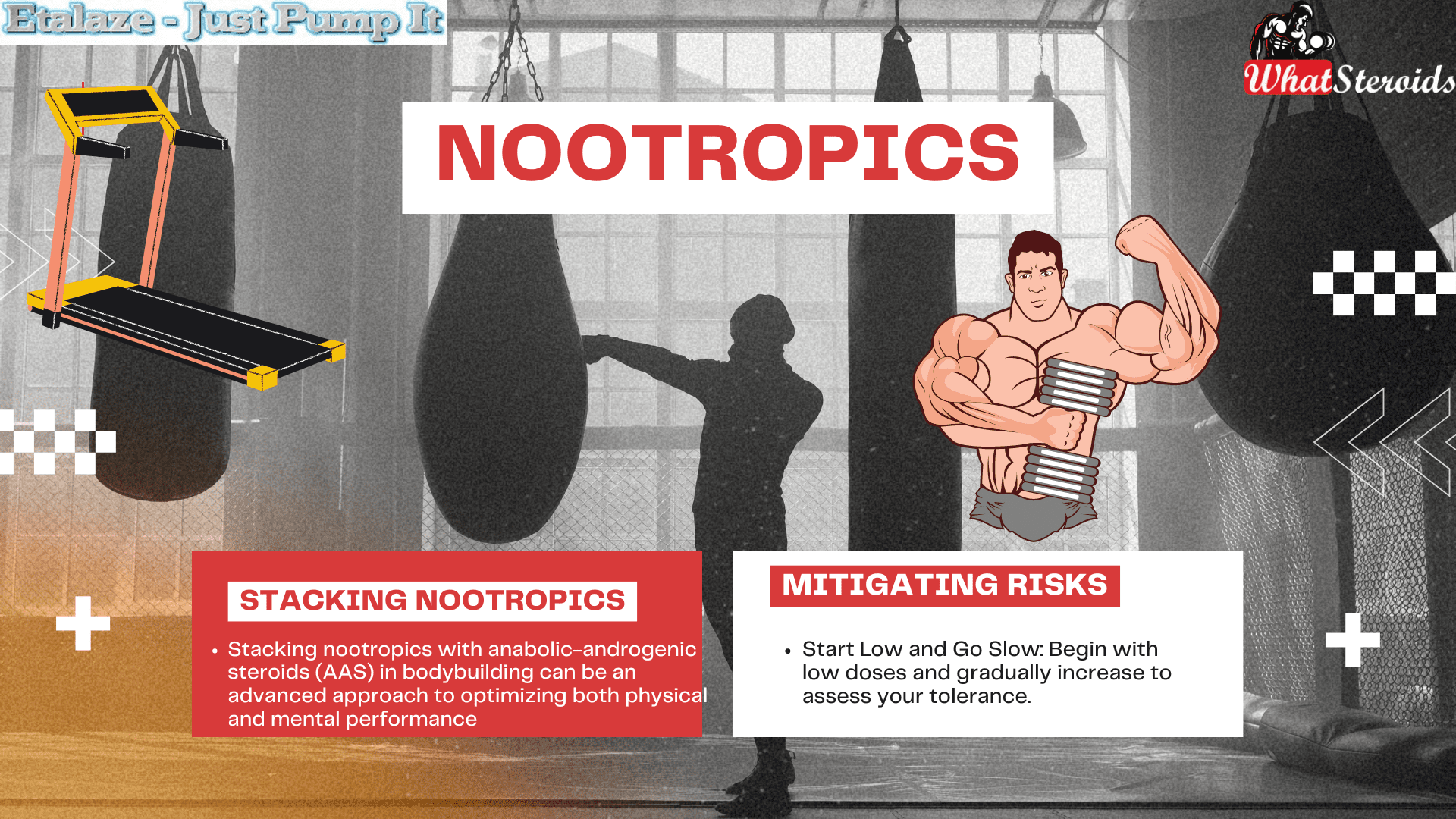
Nootropics in bodybuilding refer to supplements or substances that enhance cognitive functions such as focus, memory, motivation, and mental clarity. While traditional bodybuilding supplements focus on muscle growth, strength, and endurance, nootropics target the mental aspect of training. Improved focus and motivation can lead to better workouts, more consistent training, and ultimately better results.
Must Read: A New Caffeine? What You Need to Know about Teacrine
Here are some common nootropics used in bodybuilding:
Caffeine: Widely used for its stimulant effects, caffeine can boost energy, focus, and endurance during workouts.
L-Theanine: Often combined with caffeine, L-Theanine promotes relaxation without drowsiness, helping to balance out the jittery effects of caffeine.
Alpha-GPC: A source of choline that supports the production of acetylcholine, a neurotransmitter essential for cognitive function and muscle contraction.
Rhodiola Rosea: An adaptogen that helps reduce fatigue and improve mental resilience, making it useful for both physical and mental performance.
Bacopa Monnieri: Known for enhancing memory and reducing anxiety, Bacopa is popular for those who want to stay mentally sharp during intense training phases.
Lion’s Mane Mushroom: A natural nootropic that supports brain health, cognitive function, and reduces mental fatigue.
Phenylpiracetam: A racetam-class nootropic that is known for its stimulating effects and ability to enhance focus and mental energy, which can be beneficial during challenging workout sessions.
Stacking Nootropics With AAS
Stacking nootropics with anabolic-androgenic steroids (AAS) in bodybuilding can be an advanced approach to optimizing both physical and mental performance. Here’s a guide on how to combine these substances effectively:
Understanding the Purpose of the Stack
Combining nootropics with AAS aims to enhance not only muscle growth, strength, and recovery (which AAS focus on) but also mental aspects like focus, motivation, and mood (which nootropics address). This stack can help bodybuilders push through plateaus, manage training stress, and maintain peak performance.
Common Nootropics to Stack with AAS
Caffeine + L-Theanine: Enhances alertness and focus while reducing anxiety. Helps with energy and focus during intense workouts.
Alpha-GPC: Boosts acetylcholine levels, improving mental clarity and enhancing the mind-muscle connection.
Rhodiola Rosea: Mitigates stress and fatigue, which is crucial during heavy steroid cycles where physical and mental stress is higher.
Lion’s Mane Mushroom: Promotes cognitive health and neuroprotection, helping you stay sharp during longer cycles.
Bacopa Monnieri: Reduces anxiety and improves memory, supporting better recovery and relaxation outside the gym.
Tips for Stacking
Start with Lower Doses: If you’re new to either nootropics or AAS, start with minimal doses and gradually adjust based on how your body responds. Stacking too much too soon increases the risk of side effects.
Cycle Both Nootropics and AAS: Just like AAS, it’s wise to cycle nootropics to avoid tolerance buildup. For instance, you might use nootropics for 6-8 weeks and then take a break, aligning this cycle with your AAS cycle.
Prioritize Liver and Organ Health: Both nootropics and AAS can stress the liver and other organs. Incorporate liver support supplements like milk thistle, NAC (N-Acetyl Cysteine), and TUDCA (Tauroursodeoxycholic Acid).
Stay Hydrated and Maintain Proper Nutrition: Both nootropics and AAS can increase metabolic demands. Staying hydrated and following a nutrient-rich diet ensures better overall performance and health.
Related Article: Protein Powder Supplement Comparison – Which Type To Choose?
Sample Stack for a Cutting Phase
Nootropics: Caffeine + L-Theanine, Alpha-GPC, Rhodiola Rosea
AAS: Testosterone Propionate, Trenbolone Acetate, Anavar (Oxandrolone)
Support Supplements: Liver support (NAC, TUDCA), multivitamins, omega-3s
This stack can help maintain muscle mass, enhance focus and energy during workouts, and support mental well-being during calorie deficits.
Sample Stack for a Bulking Phase
Nootropics: Lion’s Mane, Bacopa Monnieri, Alpha-GPC
AAS: Testosterone Enanthate, Deca-Durabolin (Nandrolone Decanoate), Dianabol (Methandrostenolone)
Support Supplements: Joint support (collagen, glucosamine), digestive enzymes, liver support
This combination can boost cognitive function, improve recovery, and support the intense training needed for mass-building phases.
Stacking nootropics with AAS can offer significant benefits for bodybuilders aiming for peak mental and physical performance. However, it’s critical to approach this strategy with caution, considering the possible interactions and side effects. Always consult a healthcare professional before starting any stack, especially one involving AAS and nootropics.
Possible Side Effects Associated With Nootropics
While nootropics can enhance cognitive function, focus, and motivation, they can also cause side effects, especially when used in high doses or stacked with other supplements like anabolic-androgenic steroids (AAS). Some common side effects associated with nootropics in bodybuilding include:
1. Insomnia and Sleep Disturbances
Many nootropics, especially stimulants like caffeine, can lead to difficulties falling asleep or maintaining restful sleep. This is particularly problematic if taken late in the day, as sleep is critical for recovery and muscle growth.
2. Anxiety and Nervousness
Nootropics that stimulate the central nervous system (e.g., caffeine, phenylpiracetam) can increase anxiety, jitteriness, or nervousness, especially when combined with other stimulants or during periods of high stress.
3. Headaches
Certain nootropics, particularly racetams (like piracetam or aniracetam), can deplete choline levels in the brain, leading to headaches. Supplementing with choline sources like Alpha-GPC can help mitigate this side effect.
4. Gastrointestinal Issues
Some nootropics may cause nausea, stomach cramps, or diarrhea, especially if taken on an empty stomach or in high doses.
5. Mood Swings and Irritability
Nootropics that affect neurotransmitter levels (like dopamine or serotonin) can lead to mood swings, irritability, or even depressive symptoms if used improperly or if taken in combination with AAS, which can already impact mood.
6. Tolerance and Dependence
Frequent use of certain nootropics, particularly stimulants, can lead to tolerance, where increasing doses are needed to achieve the same effect. This can also result in dependence, where users feel they need the nootropic to function optimally.
7. Overstimulation
High doses or the wrong combination of nootropics can cause overstimulation, leading to symptoms like rapid heart rate, high blood pressure, and excessive sweating. This can be particularly risky during intense workouts.
8. Cognitive Fatigue or Brain Fog
In some cases, nootropics intended to boost focus or clarity can backfire, leading to cognitive fatigue or brain fog. This can happen due to overloading neurotransmitter pathways or poor dosing strategies.
9. Interactions with Other Supplements or Medications
Nootropics may interact with other bodybuilding supplements, medications, or AAS, leading to unexpected side effects. For example, combining stimulants like caffeine with pre-workouts or fat burners can amplify side effects like anxiety or heart palpitations.
10. Long-Term Safety Concerns
The long-term effects of many nootropics are not well-studied, especially when taken in high doses or combined with other substances. Chronic use could potentially lead to neurological imbalances or organ stress over time.
Mitigating Risks
Start Low and Go Slow: Begin with low doses and gradually increase to assess your tolerance.
Cycle Usage: Avoid using the same nootropics daily to prevent tolerance and dependence.
Stay Hydrated and Eat Well: Proper hydration and nutrition can reduce the risk of gastrointestinal and cognitive issues.
Monitor Your Response: Keep track of how you feel when taking nootropics and adjust accordingly if you notice negative side effects.
Consult a Professional: If you’re stacking nootropics with other substances like AAS, it’s essential to get medical advice to avoid harmful interactions.
While nootropics can offer cognitive and motivational benefits in bodybuilding, responsible use and monitoring are key to minimizing side effects.
Take Away
To conclude, nootropics can help bodybuilders maintain high levels of mental energy, motivation, and focus during training, which is essential for pushing through tough workouts and staying consistent with your fitness goals. However, as with any supplement, it’s important to research and consider potential side effects and interactions.
Don't Miss: Horse Chestnut and Other Supplements to Get Rid of Water Retention
Bodybuilding
How Effective is Bone Broth for Recovery?
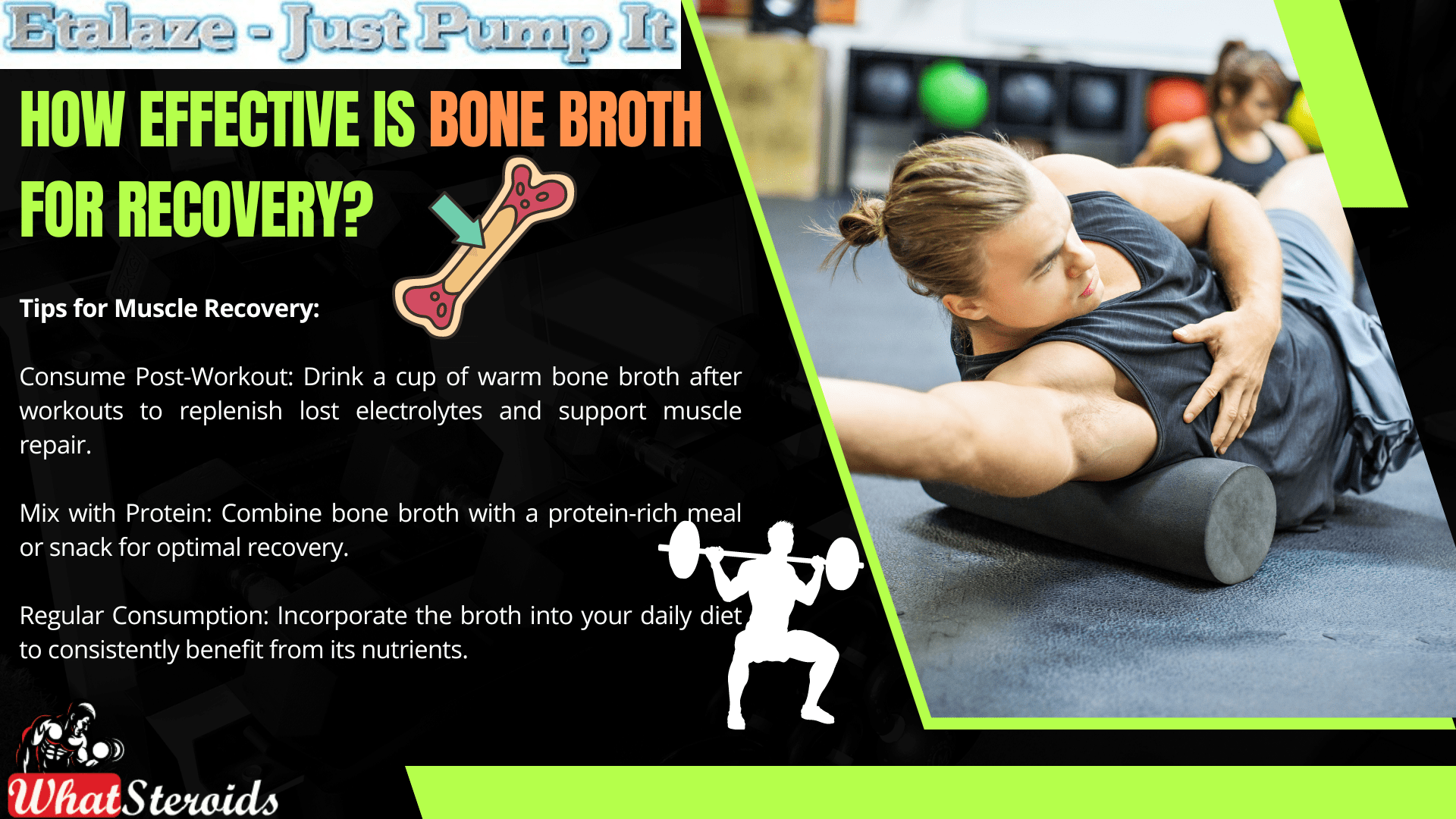
Bone broth has gained popularity in the fitness community, including among bodybuilders, due to its potential benefits for recovery. It is a nutrient-dense liquid made by simmering animal bones and connective tissues for an extended period. This process extracts a variety of beneficial compounds and nutrients. Here's how it is effective for post-workout recovery:
1. Bone Broth is Rich in Collagen and Gelatin:
Bone broth is high in collagen, a protein that supports joint, tendon, and ligament health. Gelatin, derived from collagen, may help reduce joint pain and inflammation, which is beneficial after intense workouts.
2. Amino Acid Profile:
Bone broth contains important amino acids like glycine, proline, and glutamine. These amino acids support muscle repair and growth, immune function, and gut health—all crucial for recovery.
3. Electrolytes and Hydration:
It provides electrolytes like potassium, magnesium, and calcium, which help with hydration and muscle function. Proper hydration is key to recovery and preventing cramps or muscle fatigue.
4. Mineral Content:
Bone broth is rich in essential minerals like calcium, phosphorus, and magnesium. These minerals contribute to bone health and muscle contraction, supporting recovery.
5. Anti-Inflammatory Properties:
The nutrients in the broth may help reduce inflammation, speeding up recovery and reducing soreness after workouts.
6. Supports Gut Health:
Bone broth can help heal and maintain the gut lining, which is important for nutrient absorption and overall recovery.
Must Read: Best supplements for College students
How to Prepare Bone Broth at Home
Preparing bone broth at home is straightforward and can be customized to fit your dietary needs for muscle recovery. Here’s a step-by-step guide:
Ingredients:
- Bones: Use a mix of beef, chicken, pork, or fish bones. Marrow bones, knuckles, and joints are especially rich in collagen.
- Vegetables (optional): Carrots, celery, onions, and garlic add flavor and nutrients.
- Vinegar: 1-2 tablespoons of apple cider vinegar help draw out minerals from the bones.
- Herbs and Spices (optional): Bay leaves, thyme, rosemary, and peppercorns for added flavor.
- Water: Enough to cover the bones and vegetables.
Instructions to Prepare Bone Broth
- Prepare the Bones:
- Roasting (optional but recommended): Roast the bones in the oven at 400°F (200°C) for 30-40 minutes. This enhances the flavor of the broth.
- Place Bones in a Pot:
- Transfer the bones to a large stockpot, slow cooker, or pressure cooker.
- Add Vegetables and Vinegar:
- Add your chosen vegetables and the apple cider vinegar to the pot. Vinegar is crucial as it helps extract the minerals from the bones.
- Cover with Water:
- Add enough water to cover the bones by about 2 inches. Avoid adding too much water, as it can dilute the broth.
- Cooking Time:
- Stovetop: Bring the water to a boil, then reduce the heat to a simmer. Cook for 12-24 hours. The longer you simmer, the more nutrients you extract.
- Slow Cooker: Set on low and cook for 12-24 hours.
- Pressure Cooker: Cook on high pressure for 3-4 hours.
- Skim the Foam:
- During the first hour of cooking, you might notice some foam rising to the top. Skim it off with a spoon to keep the broth clear.
- Add Herbs and Spices (optional):
- In the last hour of cooking, add any herbs or spices for flavor.
- Strain the Broth:
- Once the broth is done, strain it through a fine-mesh sieve or cheesecloth into another pot or large container to remove the bones and vegetables.
- Cool and Store:
- Let the broth cool. You can refrigerate it for up to 5 days or freeze it in portions for longer storage.
- Use the Broth:
- You can drink the broth as-is, use it as a base for soups or stews, or incorporate it into your post-workout meals.
Tips for Muscle Recovery:
Consume Post-Workout: Drink a cup of warm bone broth after workouts to replenish lost electrolytes and support muscle repair.
Mix with Protein: Combine bone broth with a protein-rich meal or snack for optimal recovery.
Regular Consumption: Incorporate the broth into your daily diet to consistently benefit from its nutrients.
Making the broth at home allows you to control the ingredients and flavor, ensuring a nutrient-rich recovery drink tailored to your needs.
Don't Miss: Chia Seeds in A Bodybuilder’s Diet: An Expert’s Advice
Incorporating Bone Broth In Your Diet
Incorporating bone broth into your bodybuilding diet can be both delicious and beneficial. Here are some creative ways to include it:
- Post-Workout Drink: Simply heat up a cup of bone broth and drink it after your workout. It’s a great way to replenish electrolytes and protein.
- Smoothies: Add a scoop of bone broth protein powder to your post-workout smoothie. It blends well with fruits and other ingredients.
- Soups and Stews: Use bone broth as a base for soups and stews. It’s an excellent way to add flavor and nutrients to your meals.
- Cooking Grains: Cook your rice, quinoa, or other grains in the broth instead of water. This enhances the flavor and nutritional content.
- Sauces and Gravies: Incorporate bone broth into sauces and gravies for added depth of flavor and health benefits.
- Marinades: Use bone broth as a base for marinades for meats and vegetables. It adds a rich flavor and helps tenderize the meat.
- Bone Broth Ice Cubes: Freeze bone broth in ice cube trays and add the cubes to your dishes as needed. This is a convenient way to add a nutritional boost to any meal.
- Bone Broth Tea: Mix bone broth with herbs and spices to create a savory tea. This can be a soothing and nutritious drink.
These methods can help you enjoy the benefits of bone broth while keeping your diet varied and interesting. Have you tried any of these methods before?
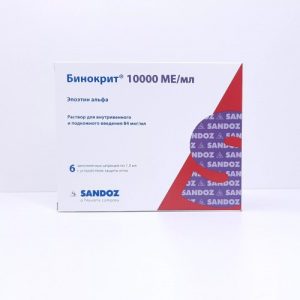 Click Here to Buy Binocrit EPO 10 000IU (6 pre-filled pens) by Sandoz
Click Here to Buy Binocrit EPO 10 000IU (6 pre-filled pens) by Sandoz
Which Animal's Bones Give the Best Broth?
Different animal bones can be used to make broth, each offering unique benefits for bodybuilding recovery. Here are some of the best options:
Beef Bones: Beef bones, especially marrow bones, knuckles, and joints, are rich in collagen and gelatin, which support joint health and muscle recovery. They also provide a deep, rich flavor and are packed with minerals like calcium and magnesium.
Chicken Bones: Chicken bones, particularly those from the feet and wings, are high in collagen and gelatin. Chicken broth is lighter in flavor but still rich in nutrients that aid in muscle repair and joint health.
Fish Bones: Fish bones, especially from oily fish like salmon, are excellent for a lighter broth that is rich in omega-3 fatty acids. These fatty acids have anti-inflammatory properties, which can help reduce muscle soreness and promote recovery.
Pork Bones: Pork bones, including the feet and hocks, are also good sources of collagen and gelatin. They produce a flavorful broth that can support joint and muscle health.
Lamb Bones: Lamb bones are another great option, providing a rich, flavorful broth that is high in collagen and minerals.
Each type of bone broth has its own unique flavor and nutritional profile, so you might want to try different ones to see which you prefer and which best supports your recovery needs.
Related Article: Essential Techniques to Master Squats Form
Overall
Can I use bone broth while on steroids? Yes, bone broth can be beneficial for bodybuilders who are using steroids or other supplements, as it provides essential nutrients that support overall health and recovery. Steroids and other performance-enhancing drugs often place additional stress on the body, particularly on the liver, kidneys, joints, and connective tissues. As mentioned, bone broth is rich in collagen, gelatin, amino acids like glycine and proline, and minerals such as calcium and magnesium, which help support joint health, reduce inflammation, and promote gut health. These benefits are especially important for bodybuilders using steroids, as these drugs can sometimes exacerbate joint pain, weaken connective tissues, or cause digestive issues.
Additionally, bone broth can help with hydration and provide electrolytes, supporting muscle function and recovery. While it shouldn't replace other key nutrients and should be used alongside a well-rounded diet and supplement regimen, bone broth can serve as a natural, nutrient-dense addition that helps mitigate some of the side effects of steroid use and enhances overall recovery and performance.
Bodybuilding
Calorie Dumping: A Bodybuilder’s Guide
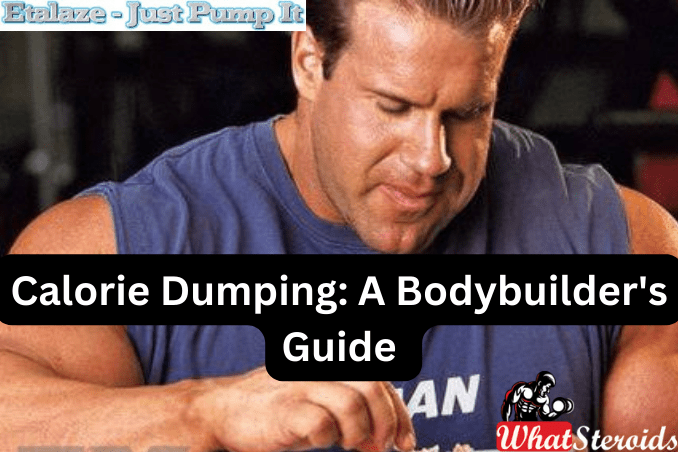
"Calorie dumping" in bodybuilding refers to a strategy where an individual consumes a large number of calories in a single meal, often following a period of low-calorie intake.
This practice is believed to support muscle growth by providing a surplus of energy and nutrients.
The idea is that after a period of restricted calorie intake, the body becomes more efficient at utilizing nutrients, making it more receptive to absorbing and utilizing the surplus calories in a short period.
However, this approach may not suit everyone and should be approached cautiously as it can lead to discomfort and potential digestive issues.
Calorie dumping, also known as refeeding or cycling calories, is sometimes preferred by bodybuilders to help prevent metabolic adaptation and aid in breaking through plateaus.
By occasionally consuming higher calorie levels, they aim to boost metabolism, replenish glycogen stores, and maintain hormone balance for better muscle growth and fat loss in the long term.
Bodybuilders focus on controlled nutrition plans to optimize muscle growth and minimize fat gain. However, occasionally, you might increase the calorie intake temporarily before an intense workout or competition to boost energy levels, but this isn't considered calorie dumping in the traditional sense.
ALSO READ: Your Guide to Become A Successful Personal Trainer
Long-term and Short-term Benefits of Calorie Dumping
Short-term benefits include replenishing glycogen stores, boosting metabolism, and providing mental relief from a strict diet.
Also known as a "refeed" or "cheat day," bodybuilders do calorie dumping for several long-term reasons:
Best Foods for Calorie Dumping
-

 Steroids2 years ago
Steroids2 years agoVOX Testing: Why Bodybuilders Must Have It Tested Regularly
-

 Steroids2 years ago
Steroids2 years agoShavers and Other Body Grooming Equipment for Bodybuilders In 2023
-

 Steroids2 years ago
Steroids2 years agoChatGPT and Other Avenues to Find Great Bodybuilding Coaches
-

 Steroids2 years ago
Steroids2 years agoBest Oil Recommendations Before Competition for Subtle Shimmer
-

 Steroids2 years ago
Steroids2 years agoPowerlifting Vs Power Building: Find Out the Big Difference and When to Shift Between the Two
-

 Nutrition1 year ago
Nutrition1 year agoEverything Nutritional Food: What’s Too Much Or Too Little
-

 Anabolic Steroids1 year ago
Anabolic Steroids1 year agoLegality of Anabolic Steroids In Latin America
-

 Bodybuilding Products12 months ago
Bodybuilding Products12 months agoTelmisartan In Bodybuilding: An Expert’s Advice
-

 Beginners2 years ago
Beginners2 years agoTren Cycle for Beginners
-

 Bodybuilding1 year ago
Bodybuilding1 year agoList of FDA-Approved Peptides
-

 Bodybuilding2 years ago
Bodybuilding2 years agoCompetition Prep Cycle for Pro Bodybuilders
-

 Bodybuilding1 year ago
Bodybuilding1 year agoChia Seeds in A Bodybuilder’s Diet: An Expert’s Advice
-

 Anabolic Steroids11 months ago
Anabolic Steroids11 months agoHow Much Do You Know About B-AET? A Fat Burner You’ve Been Missing
-

 Bodybuilding7 months ago
Bodybuilding7 months agoPrimal Movements: Our Ultimate Guide for Maximum Results
-

 Steroids11 months ago
Steroids11 months agoAnadrol Cycle: Benefits, Doses, Alternatives, etc.
-

 Anabolic Steroids8 months ago
Anabolic Steroids8 months agoJoint Stiffness: How to Manage It While on AAS
-

 Product Reviews10 months ago
Product Reviews10 months agoTop Vitamins for Skin Health
-

 Steroids9 months ago
Steroids9 months agoOmnitope (Oxytocin)
-

 Bodybuilding1 year ago
Bodybuilding1 year agoHow Much Is Too Much Cardio? Understanding Heart Rate Zones
-

 Bodybuilding8 months ago
Bodybuilding8 months agoHow Effective is Bone Broth for Recovery?
-

 Steroids10 months ago
Steroids10 months agoMajor Bodybuilding Peptides Explained
-

 Bodybuilding9 months ago
Bodybuilding9 months agoHormone Replacement Therapy (TRT) Cycle Guide
-

 Steroids8 months ago
Steroids8 months agoSleeping Positions for Effective Muscle Recovery
-

 Anabolic Steroids1 year ago
Anabolic Steroids1 year agoStart The New Year Strong With These Tips
-
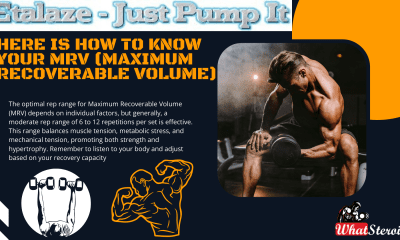
 Bodybuilding10 months ago
Bodybuilding10 months agoHere Is How To know Your MRV (Maximum Recoverable Volume)


